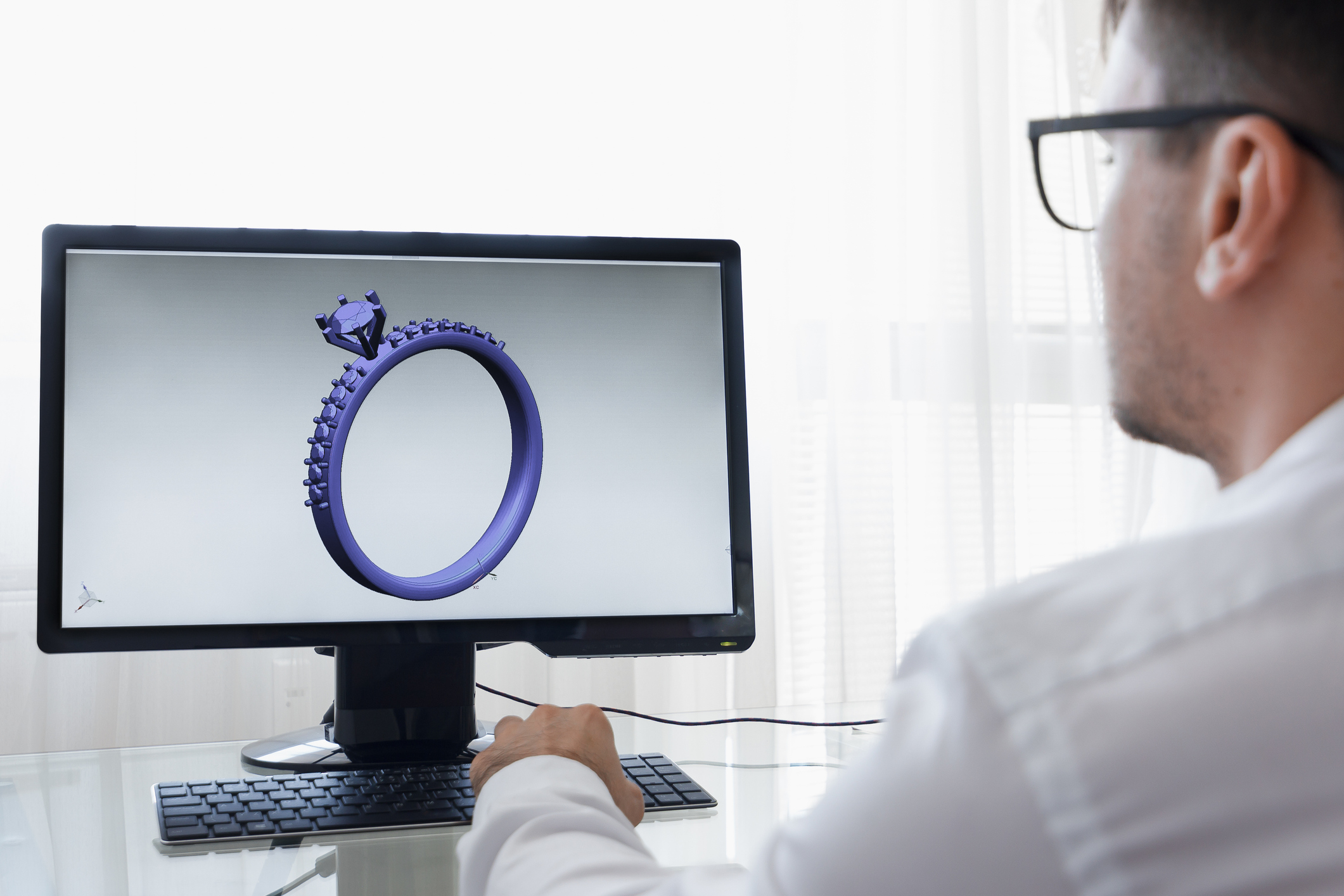Jewelry sales associates are natural storytellers, relationship-builders, and product experts. But even the best often agree on one thing: closing the sale is the toughest part. Getting the client to the finish line doesn’t have to be so daunting. It’s about knowing how to ask, when to ask, and what kind of close will feel right for the client standing in front of you.
Let’s dive into eight closing techniques you can keep in your back pocket, plus tips on how they play out on a jewelry sales floor.
1. The assumptive close
Starting off strong with the assumptive close, this is arguably the most popular and widely trained sales technique. Because sometimes, confidence is contagious. Instead of asking if a client wants to move forward, the assumptive close operates under the idea that they already have.
For example, if a customer has tried on the same diamond bracelet three times and asked about the warranty, you might casually say, “Would you like me to wrap this up as a gift, or will you be wearing it out tonight?” That subtle assumption moves the conversation past indecision and positions the purchase as the natural next step.
Why it works
The assumptive close works because it reframes the client’s role. They’re no longer deciding whether to buy—they’re simply deciding the details of the purchase. This approach is especially effective when a customer has shown strong buying signals (like trying the same piece on repeatedly or asking about financing). It keeps the energy flowing and avoids giving them an easy exit when they’re already emotionally invested.
2. The list close (the Benjamin Franklin)
Clients weighing a big decision often get stuck in their own heads. That’s where the list close, also known as the “Benjamin Franklin” comes in: you help them organize the pros and cons right there on the spot.
Imagine an engagement ring shopper who’s torn between waiting or buying today. You might say, “Let’s look at what you’d be getting: the exact cut she’s dreamed of, our lifetime cleaning service, and the peace of mind of locking it in before the holiday rush. The only drawback is deciding today instead of later.” By laying it out clearly, you help them see the scale is already tipped in their favor.
Why it works
This technique works because it brings structure to an emotional decision. Clients often feel overwhelmed by possibilities and “what ifs.” Laying out the pros and cons not only clarifies the value, but also shows that you’re helping them make a balanced decision. It’s most effective with analytical buyers who need logic, not just emotion, to feel comfortable saying yes.
3. The question close
The question close works by helping clients talk themselves into the purchase. Let’s say a customer is holding two pendants but can’t commit. Instead of pushing the sale, simply ask, “Do you see yourself wearing this every day, or would it be more for special occasions?” As they answer, they begin picturing the piece in their life, making the decision feel like it’s theirs—not yours. That’s the magic of asking the right questions at the right time.
Why it works
Questions guide the client toward self-discovery. By answering, they verbalize the desire they already feel and reinforce it in their own words. This technique works well when clients are hesitating between options or need reassurance that the piece fits their lifestyle. It keeps the conversation open while still leading toward a close.
4. The empathy close
Big-ticket purchases often come with hesitation. The empathy close acknowledges that hesitation and eases it.
Picture a client looking at a pair of diamond studs, biting their lip, clearly interested but hesitant. You might say, “I completely understand. Jewelry like this is an investment. That’s why we offer our no-questions-asked return policy. You can take them home, and if they don’t feel perfect, bring them back.” You’re not dismissing their concerns—you’re showing them you’re on their side, which builds trust and often seals the deal.
Why it works
Empathy builds trust. By validating the client’s feelings, you lower their defenses and make the purchase feel safer. This approach is most effective with cautious buyers or those making milestone purchases, where the stakes feel high. It shows you’re not just chasing a sale, and are actually invested in their happiness.
5. The scarcity close
Nothing lights a fire like scarcity. If a limited-edition pendant has only two left in stock, it’s powerful to say, “This is one of our last pieces from the collection, and once it’s gone, it’s gone.” The client who has been hesitating now realizes waiting could mean missing out. In jewelry retail, where so many designs are seasonal or one-of-a-kind, the scarcity close isn’t a gimmick—it’s the truth.
Why it works
Stressing scarcity taps into FOMO (the fear of missing out). People are naturally loss-averse, so the possibility of missing a unique piece can override hesitation. It’s most effective when you truly have limited inventory or when the client has already shown strong interest. Authenticity is key here. False urgency can damage trust.
6. The summary close
When clients are overwhelmed by options, sometimes they just need you to connect the dots. The summary close brings everything together in a neat package: “So with this ring, you’re getting a timeless platinum setting, conflict-free diamonds, and complimentary resizing for life. Would you like to complete the purchase today so you can propose this weekend?” By stacking the benefits and reminding them of their timeline, you make the decision easier to say yes to.
Why it works
This approach works because it simplifies complexity. After a long conversation, clients may forget half of what you’ve told them. Summarizing highlights the value and helps them feel they’re making an informed choice. It’s most effective when the client is 80% ready but just needs reassurance to get them to the register.
7. The visual close
Jewelry is emotional. It shines brightest when clients can see it on themselves. The visual close leans into that moment. Hand a mirror to the woman trying on earrings and say, “Take a look at how these catch the light.” Or snap a quick photo of an engagement ring on their finger and show it to them. Suddenly, it’s not just jewelry—it’s a vision of themselves owning it, wearing it, and enjoying it.
Why it works
The visual close works because it creates ownership before purchase. Seeing themselves with the jewelry helps clients picture the joy, confidence, or meaning it will bring. It transforms abstract desire into lived experience. It’s especially effective with fashion-forward buyers or anyone who responds to the emotional pull of jewelry.
8. The scale close
Some clients aren’t ready to say yes, but they are ready to tell you where they stand. That’s where the scale close works wonders. If a customer is struggling to commit, you can ask, “On a scale of 1 to 10, how close does this feel to the perfect piece?” If they say a 7, ask what would get them to a 10 so you can address it directly. Maybe it’s the metal, the price, or a small design detail. Either way, you’ve created space for an honest conversation that often leads straight to the right sale.
Why it works
The scale close uncovers hidden objections. Clients may not volunteer why they’re hesitating, but giving them a scale provides a safe way to share. This opens the door for you to solve the problem, whether it’s adjusting the price with financing, showing a similar design, or confirming a warranty detail. It’s especially effective with analytical or reserved buyers.
Closing more deals with Clientbook
No matter which close you use, success comes down to knowing your clients and following through. That’s where Clientbook gives jewelry associates the edge. With Clientbook, you can:
- Track every client’s preferences, anniversaries, and purchase history so you know what matters most to them.
- Follow up with personalized texts and reminders to keep the conversation alive—even after they walk out the door.
- Create and share wish lists so undecided clients have a reason to come back.
- Set automated reminders so nobody slips through the cracks.
Closing on the floor is important. But the truth is, many sales are won or lost in the days and weeks afterward. With Clientbook, you have the tools to keep the momentum going—helping you turn more of those “almost” moments into lifelong clients. Book a demo at demo.clientbook.com to see how.





